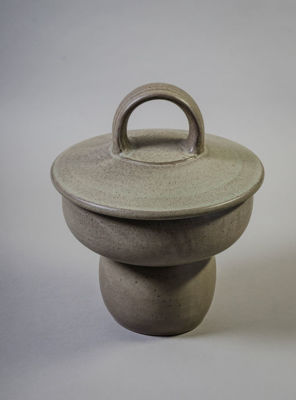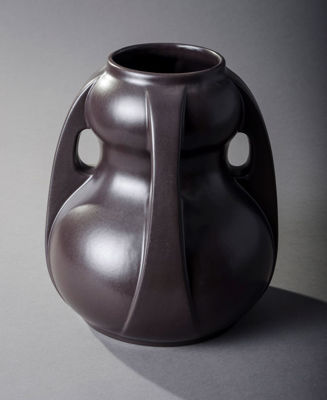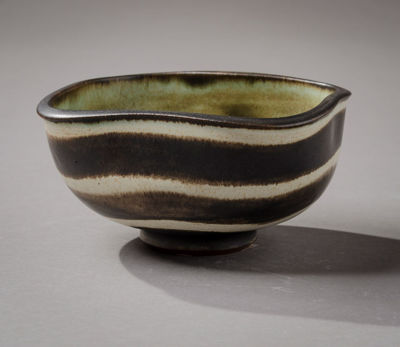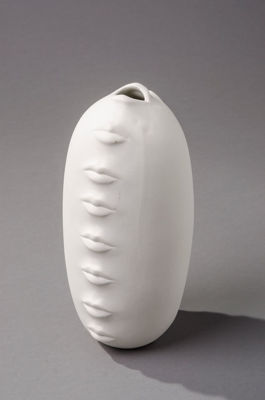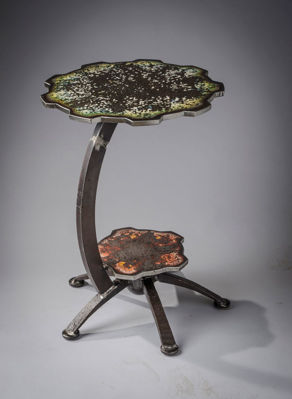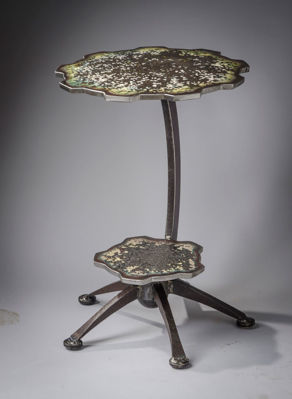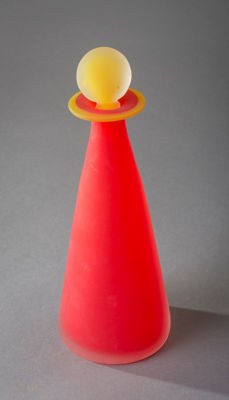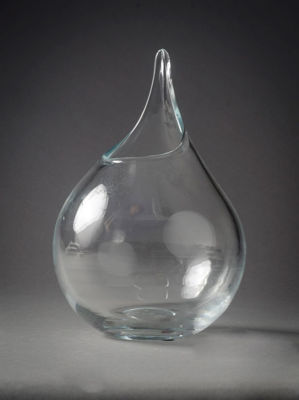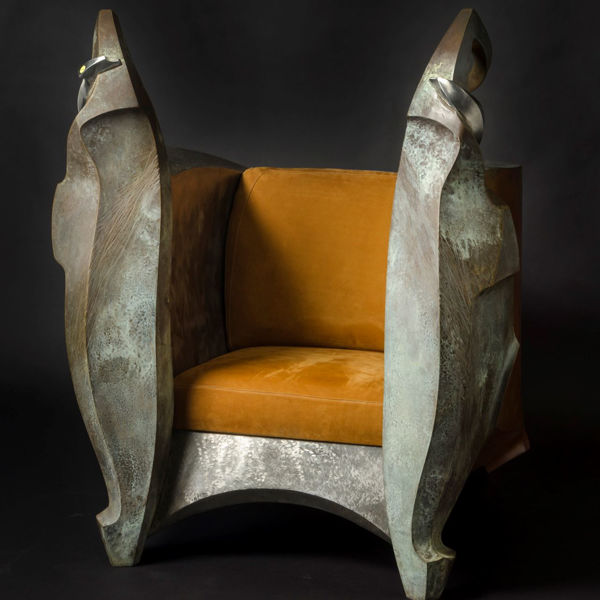Decorative and Design
Title: Footed Ceramic Jar
Large covered, footed ceramic jar covered in mottled gray glaze with white interior.
Title: Footed Jar with Bufonidae
Harris’ ceramics are semi-fictional representations of the artifact, translating a sense of mystery and exoticism — as well as intricate beauty in design — to representations such as this Footed Jar. A use of clay to represent metalwork developed from a technique known as reduction cooling, where the glazing process is bypassed to leave an sharp and rough exterior surface that appears akin to wrought iron. Such a transmutation offers the chance for reinterpretation and recharacterisation of ancient symbols Harris lifts from specific reference points, giving them contemporary logic, and she can be seen to playfully heighten the sense of camouflaged material identity by baking the jar in several different kilns — which imprint layers of metallic sheen upon the surface.
Title: Four Handled Amphora Flag Vase
Tall four-handled Amphora flag vase with enameled roses, Turn-Teplitz, Bohemia, ca. 1906; Stamped 1167/7
Title: Four Handled Stylized Vase
Paul dachsel Mark, impressed 1049, Mint. IIlustrated in Monsters and Maidens Collectors Edition,Byron Vreeland, page 426. Size 10" T.
Title: Four-Sided Bowl
Stoneware piece: four-sided bowl, covered in ivory and dark brown striped matte glaze, with speckled interiors. impressed artist"s cipher.
Title: Frosted Glass Vase
Austrian copper and frosted glass vase of unknown origin or date, but with a philosophical lineage to Jugendstil, or Art Nouveau, that suggests an early 20th century manufacturing. A copper overlay directs the overall exterior surface, utilising handsomely patterned and segmented reliefs that open access to the long-necked frosted glass vase, with corners gently curving. The composite greens and bronze of the material form a tranquil harmony.
Title: Gilt Bronze Mounted Marquetry Bombe
A Louis XV Style Gilt Bronze Mounted Marquetry Bombe Commode 19th century having a serpentine front marble top over a conforming case enclosing two drawers inlaid to show blossoming vines, raised on splayed legs ending in sabots. Height 33 3/4 x width 47 x depth 20 1/2 inches. Property from the Collection of Scott Lindsay, Kansas City, Missouri

